Many companies are finding it increasingly difficult to reach out, attract and hire people with the right drive and skills. How do you find the right person at the right time, despite the fierce competition?
In this post, we at Starfinder share five concrete keys to more accurate recruitment in the automotive industry.
Why the needs of the automotive industry are changing
Rapid developments in the automotive industry mean that skills requirements are not what they were just a few years ago. New business models, increased digitalization and sustainability goals are affecting the skills in demand.
Some clear changes in the industry are:
- Increased technological breadth: Skills in electric drive, software-intensive systems and connected vehicles are now as important as traditional vehicle technology.
- Stronger customer focus: Today’s car buyers expect more than product knowledge. They want advice, availability and service on their terms.
- Digital skills: Sales, customer service and service roles require familiarity with CRM systems, data-driven working methods and digital communication.
- Mix of hard and soft skills: Many organizations are now looking for people who can move between technology, business and customer relations.
For you as a recruiter, this means you need to look wider and think ahead. Below we go through our top tips for identifying the skills of the future today.
Want to know more about how we work with automotive industry stakeholders? Read about our specialist automotive expertise here.
1. Adapt the requirements profile to your needs
A common pitfall in recruitment in the automotive industry is to rely on old templates, a previous requirements profile or reused advertisements. To succeed in the long term in a rapidly changing industry, you need to ask yourself the question: What will this employee contribute in practice, today and in the long term?
The modern automotive industry often requires more than someone who has “done it before”. The right candidate will have a combination of qualities that reflect the new demands of the industry:
- Technical understanding, especially related to electric power, software and connected vehicles.
- Strong customer focus: Ability to establish trust and build relationships.
- Business acumen: understanding of profitability, service and sales.
- Digital skills: Experience with CRM systems, analytical tools and digital processes.
- High flexibility and initiative: ability to adapt to changing conditions.
Daring to rethink and question old requirement profiles is often crucial for successful recruitment in today’s automotive industry.
2. Look beyond the CV
One of the biggest mistakes in automotive recruitment is to get stuck on experience and hard skills. In practice, however, it is often attitude, learning ability and values that determine whether a person will succeed in a role.
At Starfinder, we have seen several examples of candidates from completely different industries, such as retail, engineering, service or logistics, who have quickly entered the automotive world and performed very well.
In addition to experience, it is therefore important to look at candidates’ soft skills, for example:
- Taking responsibility
- Initiative
- Communicative skills
- Problem-solving skills
When competition for candidates is fierce, you need to broaden your view of what makes a perfect match. Skills can always be developed, but the right attitude is hard to train.
3. build a strong employer brand
In a competitive market, candidates choose their employers as much as the employer chooses them. Therefore, you need to be clear about your employer brand and what you offer beyond salary and benefits.
Employer branding is about showcasing your work culture and highlighting what makes you unique, for example:
- Investing in training and development
- A team with strong cohesion
- Engaging managers with clear leadership
- Innovation and the future of the product
Keep it real and reflect it in the whole process, from ad to interview. That’s how you get through the noise.
4. Let the recruitment process reflect your brand
A strong employer brand is not enough if it is not backed up by a well-thought-out recruitment process. For many candidates, the process is the first real encounter with you as an employer and it is there that you are perceived.
An unclear, slow or impersonal process risks scaring off attractive candidates. The most successful employers are often those who are perceived as decisive, present and professional throughout the process.
A good recruitment process is:
- Structured with clear steps and deadlines
- Efficient without unnecessary waiting
- Respectful in both treatment and feedback
With the right process, you’ll have a better candidate experience, effective hiring and a stronger employer brand.
5. Work proactively and with the right partners
Don’t wait until recruitment needs are urgent. In a competitive market, anticipation is key. The most attractive candidates are often already employed and not actively looking for new roles. This requires a strategic and proactive approach.
To increase the chances of finding the right person at the right time, you need:
- Identifying future skills needs
- Build relationships through ongoing dialog with relevant profiles
- Create and maintain a strong network even before the need arises
At Starfinder we work long-term with both active and passive candidates. With long experience of recruitment in sales, technology, aftermarket and leadership, we know what it takes, both for a candidate to fit into the organization and for them to want to choose you as an employer.
Read more about how Starfinder helps companies with recruitment.
Starfinder helps you succeed in automotive recruitment
Finding the right people in the automotive industry today requires strategy, structure and people skills. It’s not just about filling a vacancy, but about finding the right person to develop the business, strengthen the team and meet the demands of the future.
Do you want help finding the next key person for your business? Contact us at Starfinder. We’ll help you think right, reach the right people and build a team that lasts over time.






